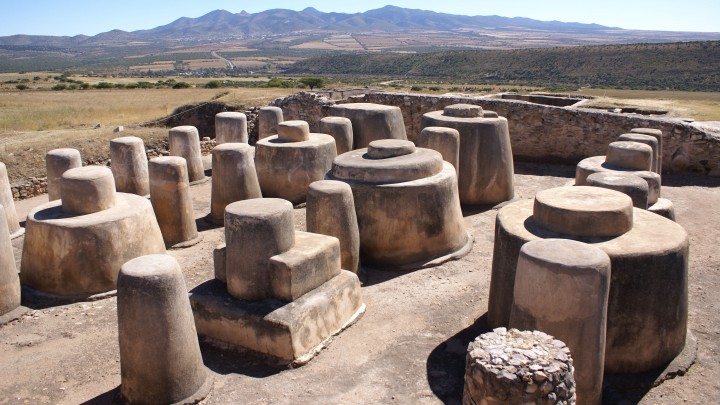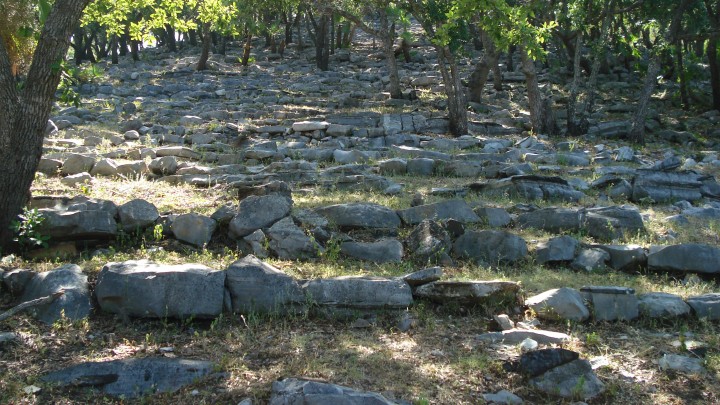Archeological Sites
189 Sites
One of the main centers in the northern Yucatan Peninsula. It has two magnificent structures: The Pyramid and the Palace of Stuccos. The latter has a frieze decorated with animals, indicating a possible connection with Teotihuacan.
Yucatán
Sureste
1880
Remarkable for its system of roads called sacbeoob in Maya (plural of sacbe), the site is surrounded by concentric walls, and The Pilasters building is unusual because of the 36 square-based columns on top.
Yucatán
Sureste
1881
One of the most important ceremonial centers of northern Mesoamerica. Its orientation allows for the observation of the Sun’s yearly movement and, like Chichen Itza, it attracts visitors at the time of the spring equinox.
Zacatecas
Norte
1898

Arroyo Seco is one of the most representative rock art sites in the north-east of Guanajuato state. The imagery, created above all by hunter-gatherer societies during the pre-Hispanic period, constitutes one of the most emblematic such examples from central and northern region of Mexico.
Guanajuato
Altiplano Central
16440
A monumental complex close to Monte Albán that testifies to the expansion of this culture at its height. The nobility lived here, as can be inferred from the numerous palaces, living complexes, squares and a burial complex.
Oaxaca
Oaxaca
1757

The ancient Maya inhabitants of the region constructed a ceremonial center within a cavern. Most notable is a giant pillar made by the fusion of a stalactite with a stalagmite known as the Sacred Ceiba (silk-cotton tree).
Yucatán
Sureste
1882
Deep in the Campeche jungle, this site is composed of three building complexes.
The polychrome molded stucco frieze of the Central Group, unique in the Mayan area,
is proof of the artistic mastery of its ancient inhabitants.
The polychrome molded stucco frieze of the Central Group, unique in the Mayan area,
is proof of the artistic mastery of its ancient inhabitants.
Campeche
Sureste
1659
Its size is a clue to its important role on the Huastec trading routes. There are around a hundred limestone plinths upon which we can assume houses were built with palm roofs and walls made from branches covered with mud.
Tamaulipas
Norte
1824
A powerful regional capital, as evidenced by its monumental constructions, Becán also boasts something found nowhere else in the Maya area: a fosse surrounding the site’s most important buildings, which has seven entrances.
Campeche
Sureste
1660














